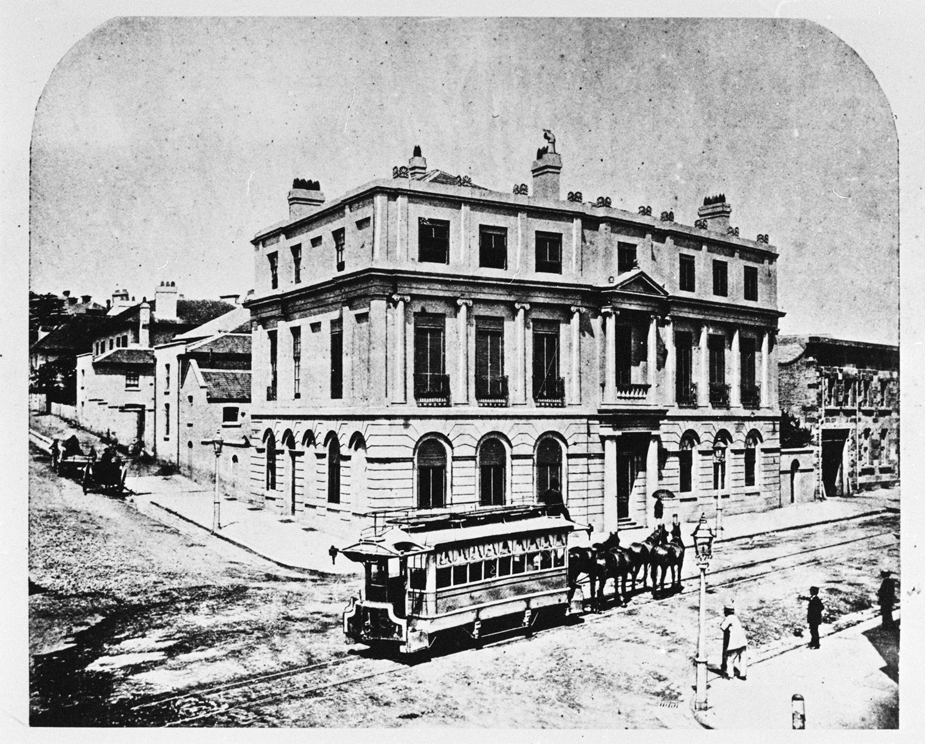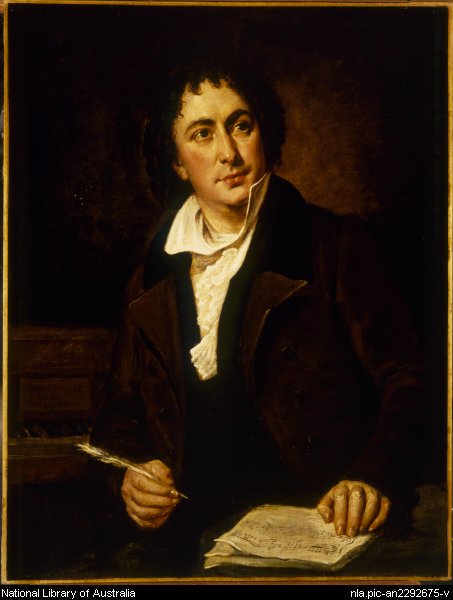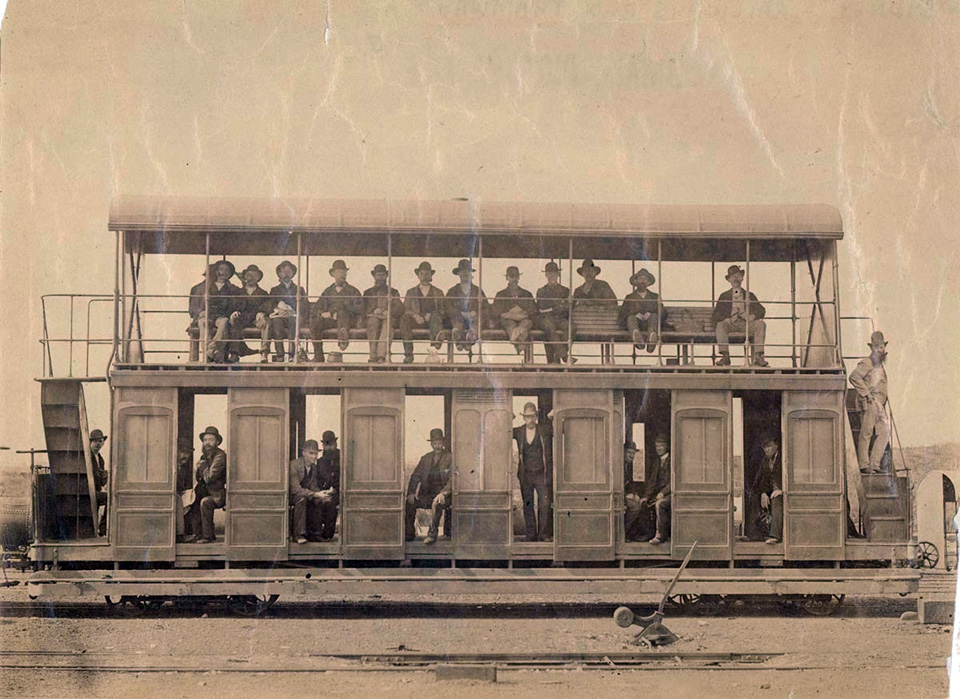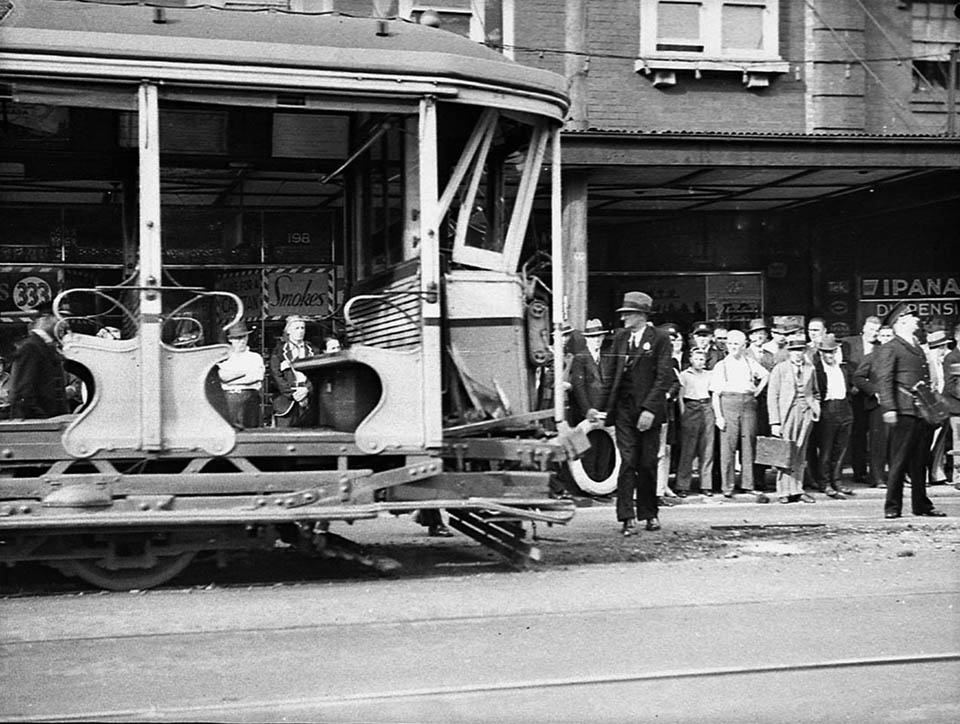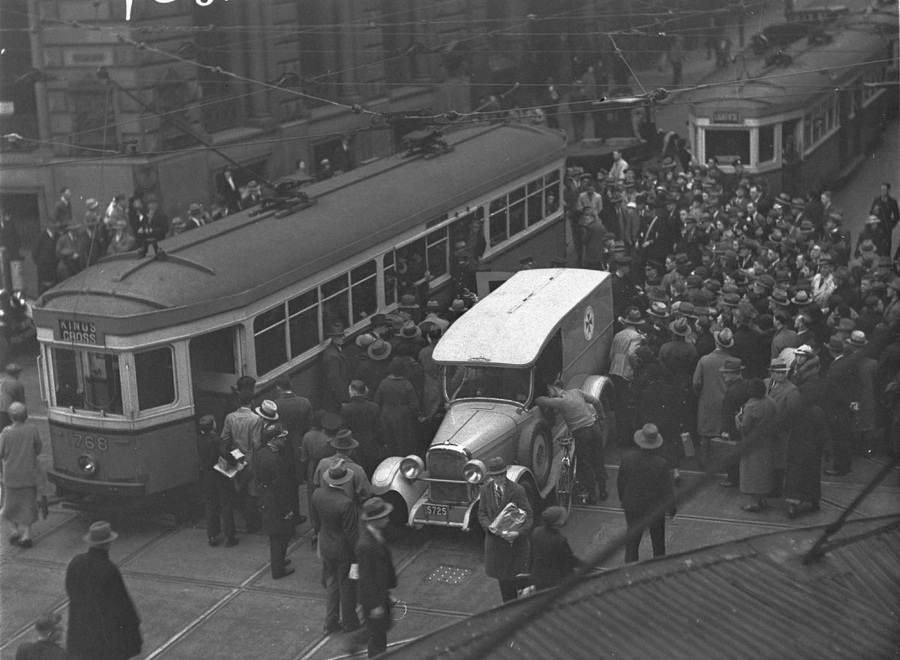The Dictionary of Sydney was archived in 2021.
Tram deaths
Citation
Persistent URL for this entry
To cite this entry in text
To cite this entry in a Wikipedia footnote citation
To cite this entry as a Wikipedia External link
Tram deaths
While trams are usually seen as benign public transport, they have caused several deaths in Sydney. Some have been very high-profile people, with incidents receiving wide publicity. However no story is as poignant as that of the young boy in South Australia who considerately leant out of the tram window, in breach of a by-law, to be sick, but struck his head against a steel standard pole, and died as a result of his injuries. [1]
Sydney's first death by tram
Sydney's [media]first tram system, hauled by horses, started operation in December 1861, and the first death occurred in less than two years. As a newspaper reported in May 1863, “A frightful accident occurred on the tramway, in Pitt-street, on Sunday evening last. A little child, named Thomas Gowan, aged four years, either fell or was knocked down on the tram, when one of the cars passed over its right leg, completely severing it between the foot and the ankle”. [2] The boy died a few days later, and at the inquest he was identified as Thomas McGowan, aged six. [3]
[media]Less than a year later, another accident led to a death. This was of musician and teacher Isaac Nathan. At about 5 pm on the afternoon of 15 January 1864, Professor Nathan was on the Pitt Street horse tram, on his way home. As he stepped from the tram at Goulburn Street, it moved suddenly forward, and he fell underneath. He was crushed to death. [4] It occurred so quickly that witnesses found it hard to describe the sequence of events.
Sydney was shocked to find that a tram could be such a dangerous conveyance, and public concern led to a select committee recommending the removal of the tram system. Luckily, the city's developing horse-bus system was able to fill the vacuum immediately.
Steam trams
[media]It was only with the impending opening of the Sydney International Exhibitions of 1879–80 – an important event for Sydney because it placed the city and the colony on show to the world – that the government decided to put in a new tram system, using the latest steam technology.
However, within three years, another tram-related death occurred. A Mr Toohey was travelling in a horse and cart along Elizabeth Street, between King and Market streets, when the tail of his cart was struck by one of the new steam trams. The impact overturned the cart, and inflicted fatal injuries.
This death also generated controversy, and suggestions that the tram system should be closed down. A Supreme Court action was brought against the authorities, for damages arising from Toohey's death. [5] Most unsettling was the court's decision that the death was due to 'negligence on the part of those in charge of the motor'. Further, the court decided that 'the use of noisy steam motors, emitting steam and smoke, was a danger to horses and other vehicles travelling along the street', and that, under existing legislation, the use of steam to power the trams was illegal.
Unfortunately, we know little about the case of Isabella Burgess of Newtown, who died when she was struck by a tram in 1901. [6]
Electric trams
[media]Electric trams began operating in Sydney in 1898, and most of the steam system was converted by 1910. But the tram tracks could still cause problems. On the night of 1 January 1923, Constable McGrath of the Redfern Police Station was riding on the rear of a police vehicle escorting prisoners from his station to Central Police Station. As the vehicle bumped over a rough section of tramlines at the intersection of Park and College streets, the constable lost his hold and fell to the roadway. He suffered a fractured skull and died after being conveyed to [media]hospital. [7]
Two decades later, another tram death involved a far better-known figure. Lea Sonia (Benjamin O'Reilly), 'the celebrated burlesque female impersonator' as the Sydney Truth described him, was the headline star at Sydney's Tivoli Theatre. He had been performing his humorous monologue 'The Eleven Sixty-Nine Express' at the Maxine Night Club in Oxford Street, Woollahra, and as an encore had sung 'Please Don't Talk About Me When I'm Gone'. But coming out of the brilliantly lit nightclub, he ran across Oxford Street – dark because of the wartime 'brown-out' – to intercept a taxi, and ran directly in front of a tram. He was shockingly injured, and his death was instantaneous. [8]
Today, safety provisions on public transport are much more stringent, especially on the city's tram equivalent – the light rail that runs through the Haymarket area and out to Pyrmont and Ultimo. Sydney may have seen the last of tram deaths.
Notes
[1] Henwood v Municipal Tramways Trust (South Australia) (1938) 60 CLR 438
[2] Empire, 2 May 1863, p 5
[3] Sydney Morning Herald, 5 May 1863, p4
[4] Catherine Mackerras, 'Nathan, Isaac (1790–1864)', Australian Dictionary of Biography, vol 2, Melbourne University Press, Melbourne, 1967, pp 279–280
[5] Sydney Morning Herald, 19 May 1883
[6] Yass Courier, 13 August 1901
[7] The Thin Blue Line, 'Police Deaths in NSW: 1788–1996', http://www.policensw.com/info/policerem/text/index7.html#mc1
[8] Sydney Truth, 1 February 1942, p 21



